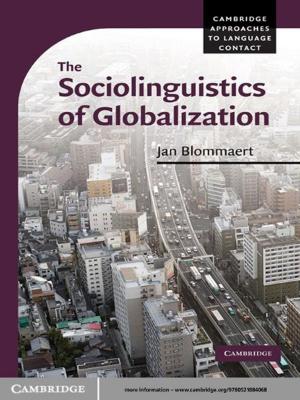Mafia Organizations
The Visible Hand of Criminal Enterprise
Business & Finance, Human Resources & Personnel Management, Organizational Behavior, Nonfiction, Social & Cultural Studies, Social Science| Author: | Maurizio Catino | ISBN: | 9781108750936 |
| Publisher: | Cambridge University Press | Publication: | February 7, 2019 |
| Imprint: | Cambridge University Press | Language: | English |
| Author: | Maurizio Catino |
| ISBN: | 9781108750936 |
| Publisher: | Cambridge University Press |
| Publication: | February 7, 2019 |
| Imprint: | Cambridge University Press |
| Language: | English |
How do mafias work? How do they recruit people, control members, conduct legal and illegal business, and use violence? Why do they establish such a complex mix of rituals, rules, and codes of conduct? And how do they differ? Why do some mafias commit many more murders than others? This book makes sense of mafias as organizations, via a collative analysis of historical accounts, official data, investigative sources, and interviews. Catino presents a comparative study of seven mafias around the world, from three Italian mafias to the American Cosa Nostra, Japanese Yakuza, Chinese Triads, and Russian mafia. He identifies the organizational architecture that characterizes these criminal groups, and relates different organizational models to the use of violence. Furthermore, he advances a theory on the specific functionality of mafia rules and discusses the major organizational dilemmas that mafias face. This book shows that understanding the organizational logic of mafias is an indispensable step in confronting them.
How do mafias work? How do they recruit people, control members, conduct legal and illegal business, and use violence? Why do they establish such a complex mix of rituals, rules, and codes of conduct? And how do they differ? Why do some mafias commit many more murders than others? This book makes sense of mafias as organizations, via a collative analysis of historical accounts, official data, investigative sources, and interviews. Catino presents a comparative study of seven mafias around the world, from three Italian mafias to the American Cosa Nostra, Japanese Yakuza, Chinese Triads, and Russian mafia. He identifies the organizational architecture that characterizes these criminal groups, and relates different organizational models to the use of violence. Furthermore, he advances a theory on the specific functionality of mafia rules and discusses the major organizational dilemmas that mafias face. This book shows that understanding the organizational logic of mafias is an indispensable step in confronting them.















